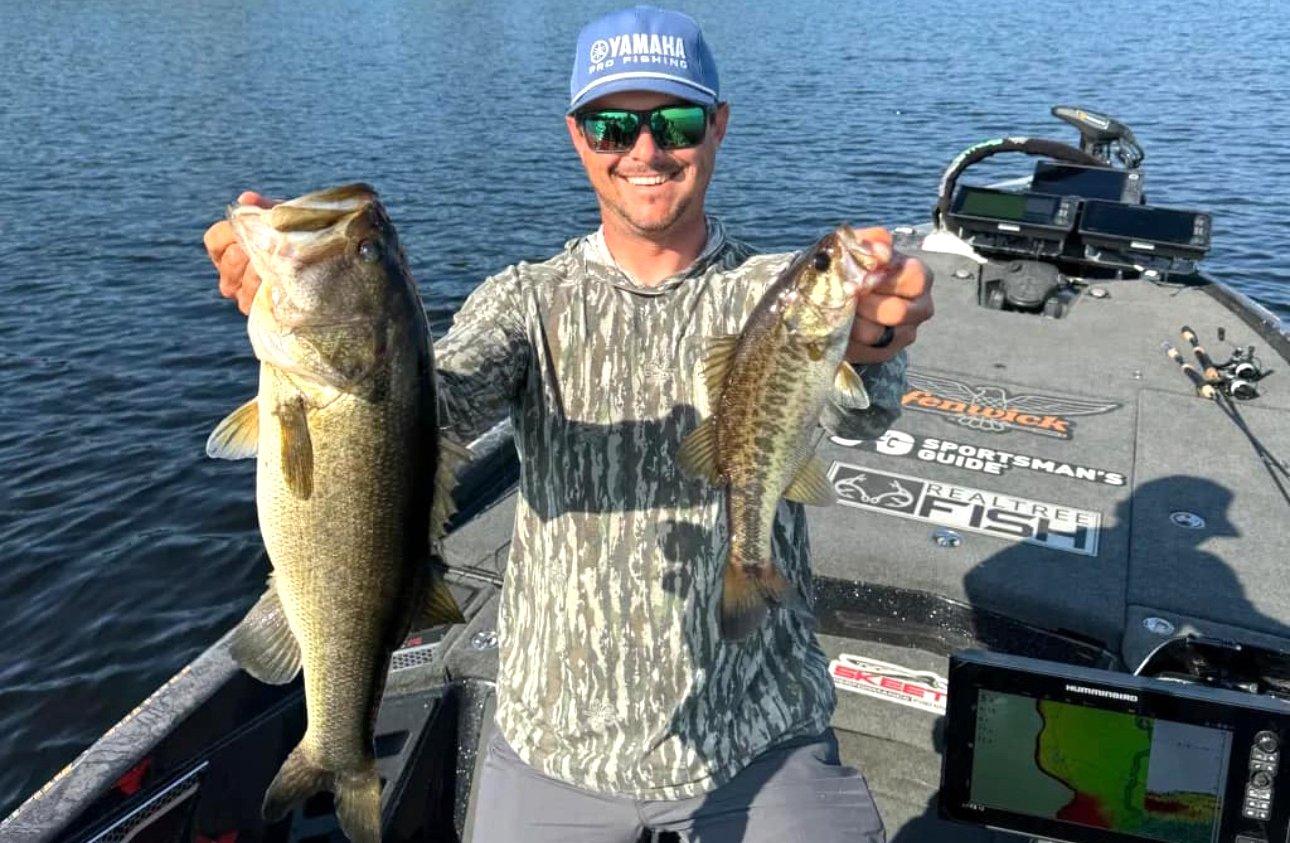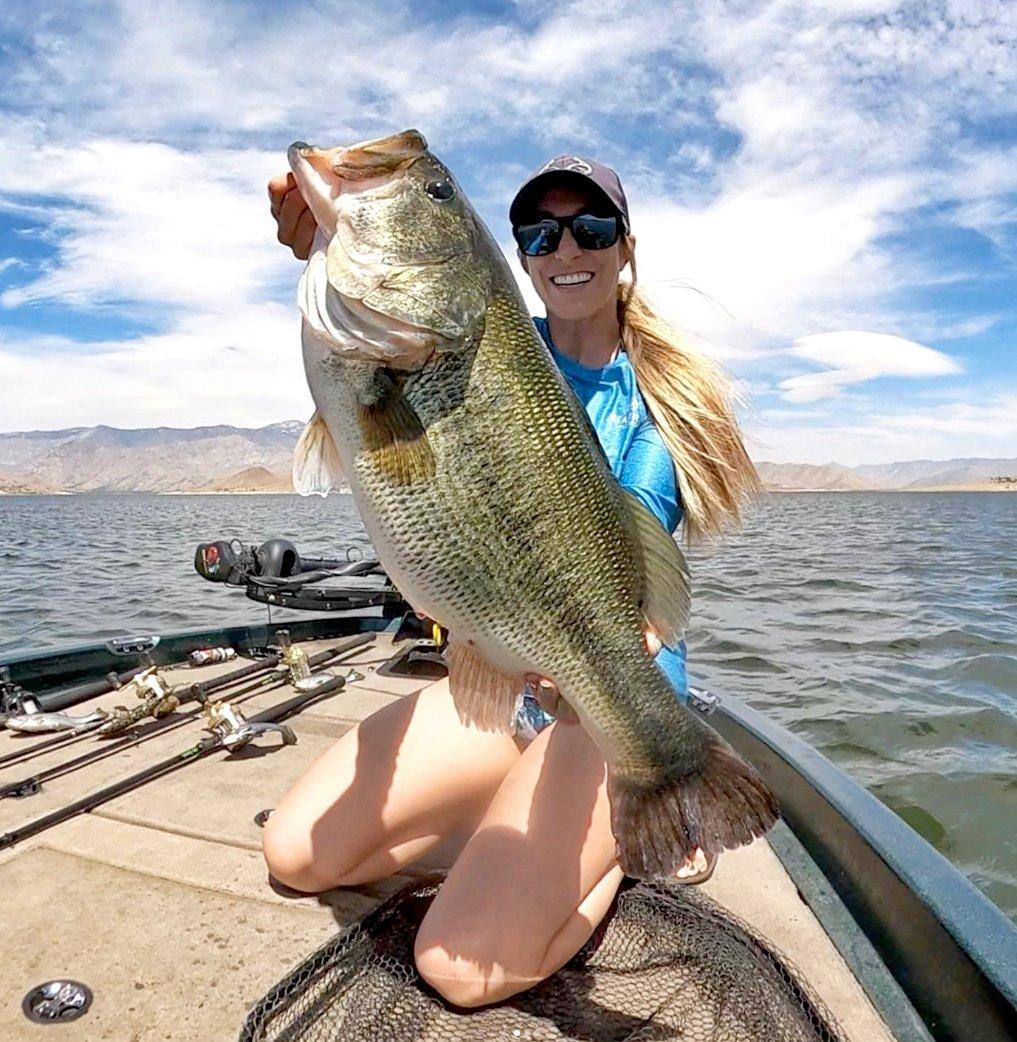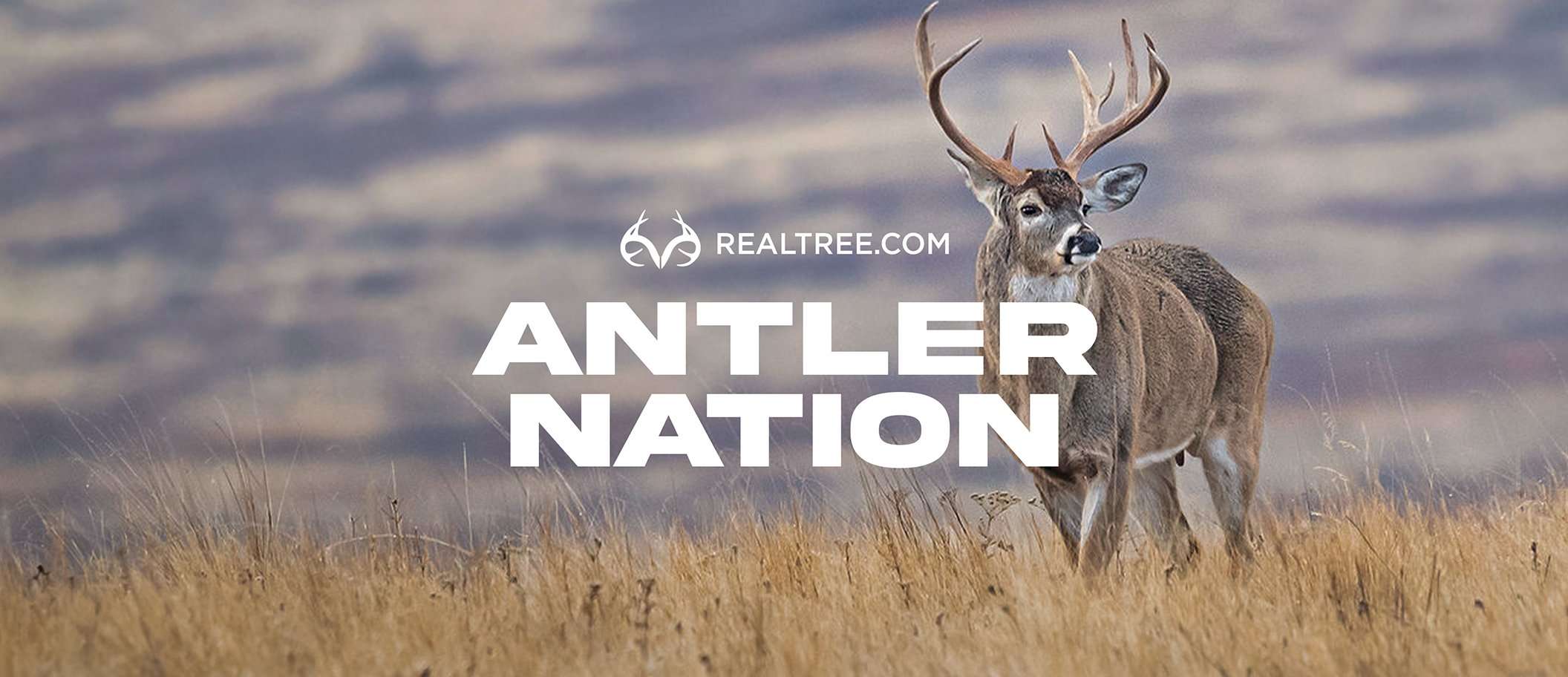Want to make a full-time living on the water with a rod and reel in hand? Catching fish can be the easy part
In the category of dream jobs, professional fisherman tops the list. What could be better?
Loving your job is one thing, but getting paid to fish is truly out of this world. Being successful still requires hard work, just like any other job, but it’s possible.

For many, getting paid to go fishing is a dream job. With hard work, it can be done. Image by Justin Atkins.
For more than 25 years, I’ve made my living in the fishing industry. A long list of jobs has included seminar speaker, tournament pro, product spokesman, writer, and more. Today, I run an outdoor-based nonprofit focusing on one of the country’s most iconic bass fisheries. Some jobs found me with a rod in my hand, others, not so much.
As an in-and-out pro angler, I’ve watched the fishing industry evolve and cater to a wide range of money-making opportunities. In 2025, the opportunities to get on the water each day and come home with a paycheck are broader than ever. All can be considered “going pro,” so let’s look at the three top options.
FISHING GUIDE
This trade is one of the oldest jobs in angling, perhaps only behind commercial fisherman. I’ve always thought of guiding as a profession where you’ve got it, or you don’t. Most anglers don’t fit well with the job. The ones that do, however, love it, and often make very long careers from guiding.
The difficulty lies in understanding the role of the captain. As a guide, you are not there solely to put your clients on fish. And you are certainly not there to catch fish. The role of the guide is to bring clients the enjoyment of the outdoor experience. How those clients go about enjoying themselves is really up to them, and a guide must cater to those personal preferences.

Fishing captains have to balance the desire to catch fish with the desire of their clients to have fun. Image by Lloyd Landry.
Have a boat full of accomplished anglers ready to catch a lunker? Great. But you might also get a boat full of college buddies on a bachelor party, more interested in pranks and beer. You’ll need to cater to that crowd while remaining professional and safe.
In my part of the world (in Florida), the vast majority of freshwater anglers hiring a guide are simply taking a day away from Disney World. Rarely are they serious anglers, and their ruggedness in the outdoors is almost nonexistent. If a guide is strictly all business, it makes for a long day. You’ll need to get an honest grip on your potential clientele before jumping into the world of guiding. The best guides are usually entertainers with a passion for the outdoors.
TOURNAMENT PRO
Here’s the job that gets the most press but is likely the most misunderstood. Although there are tournaments for other species, we’ll focus on bass fishing for this category, as the only full-time tournament trails in freshwater are currently for black bass.

Mention fishing as a job and many people immediately think of tournament pros. Image by Justin Atkins.
Back in the day, being a tournament pro simply meant being successful in the competitive arena. Dollars and endorsements followed those who caught the biggest bags, event after event. Today, that’s not always the case.
The most successful pros today, in terms of income and stability, aren’t always those with the highest finishes. A pro’s overall reach is the most important factor.
Making a living as a tournament pro is very expensive, with operating costs exceeding $100,000 each season. Entry fees are nearly half that alone. Conversely, a look at the money list of the sport’s biggest circuits usually contains only a dozen or so individuals with six-figure win totals.
Don’t get me wrong, the big leagues of bass offer big-time payouts to the top tier. Guys such as Jeff Sprague and Alton Jones, Jr. crested the six-figure mark this past year on the Bass Pro Tour, and joined others in the millionaire’s club.
But most pros have to generate a majority of their income from something other than tournament checks, usually through endorsement deals. Yet in modern times, fishing equipment manufacturers have largely shied away from paying spokespeople, so many anglers must work to appeal to non-endemic (outside the fishing business) brands.
Another option is to accept product as a means of payment, and build a pipeline for sales of those items. That’s never been easier thanks to Facebook Marketplace, Craig’s List, and other distribution options. Be proactive.

Today’s successful pros expand their reach outside of the fishing industry through social media. Image by Millennium Promotions.
Finally, up your social-media game and put as much time into building a YouTube channel as you do building up your tackle selection. It’s something you’ll need to work on every day. Having a content plan that you can promote, demonstrate, and sell will add reliable income to the bank to supplement tournament winnings.
FISHING INFLUENCER
A trendy word with a bad rap, becoming an influencer is a real thing and can generate very real income. Going further, I’d wager than most anglers could make a better living working in this realm than competing full-time.
It’s important to understand how influencing works. Think in terms of exposure. Brands pay endorsers to gain exposure, whether that be through the exposure of a big tournament win, or the result of a viral video. Although these modes of publicity are not the same, they’re effective.
To become a full-time fishing influencer, you’ll have to invest in your business, just like any other entrepreneur. This will require photo and video equipment, and possibly a helper or two. Even more important are your messaging and editing skills.

A modern twist on the outdoor industry is the influencer. As with any job, learning the ins and outs of the business and hard work go a long way toward success. Image by Kayla Nevius.
All of this can be done relatively easily. Never before has video and photo equipment been so advanced and readily available. Take it from me: I’ve got a case of expensive cameras gathering dust while most of my work today is done on an iPhone.
Learn your device, and get the maximum out of it. This is straightforward through online tutorials. Ask others with cool pics and videos for their secrets. Even better, latch on to a friend who’s skilled in content capture. They’ll be helpful in building material and efficient far beyond a tripod.
Have an organized game plan for content production. Work on your on-screen performance, and study effective videos ahead of time. Plan a route for your delivery, messaging, length and look. Duplicate what works.
Editing is easy on your phone, but far more effective on a workstation. Learn software such as Final Cut Pro, Lightroom and Premier Pro. Don’t overdo it with production; just keep your final product clear, concise, and cool.
Finally, be sure to keep track of your content posting and performance, and build reports to share with potential sponsors and supports. Learn everything you can about monetizing your social feeds. Don’t get caught up in single, viral performers, and instead stick to a reliable message.
Remember, today’s society is replacing former modes of entertainment (TV, for example) with online content. Just like your favorite shows of old, reliability is an attractive aspect. Give the audience what they want, regularly.
You probably never thought there was so much involved in becoming a pro angler. Sure, you can make a few bucks concentrating strictly on tournament performance or guiding clients to a limit a fish. But to truly build a big-money career, the secret today is in the media.
Master that first, and the fishing part is easy.












